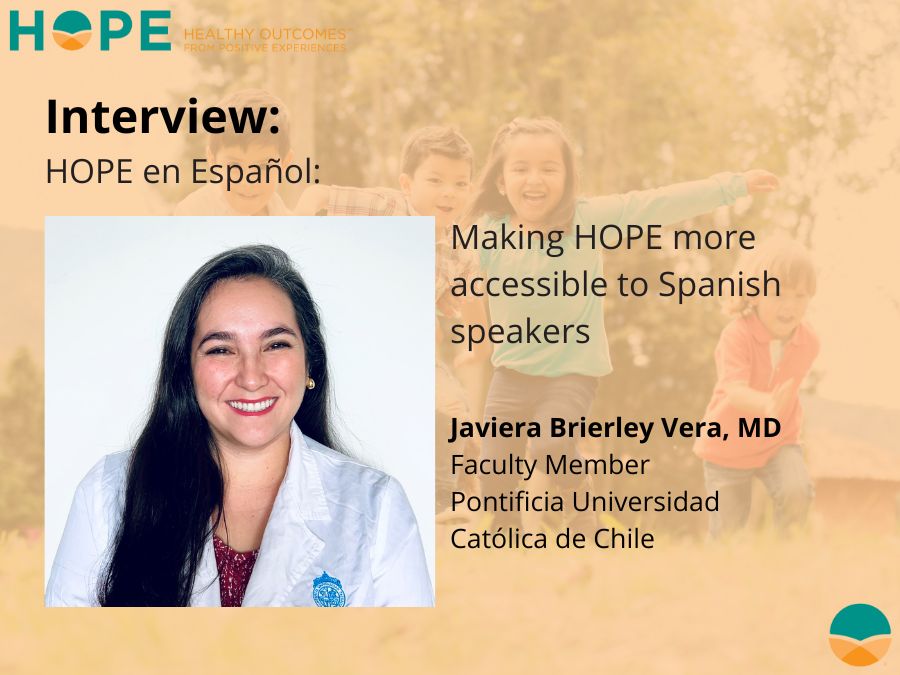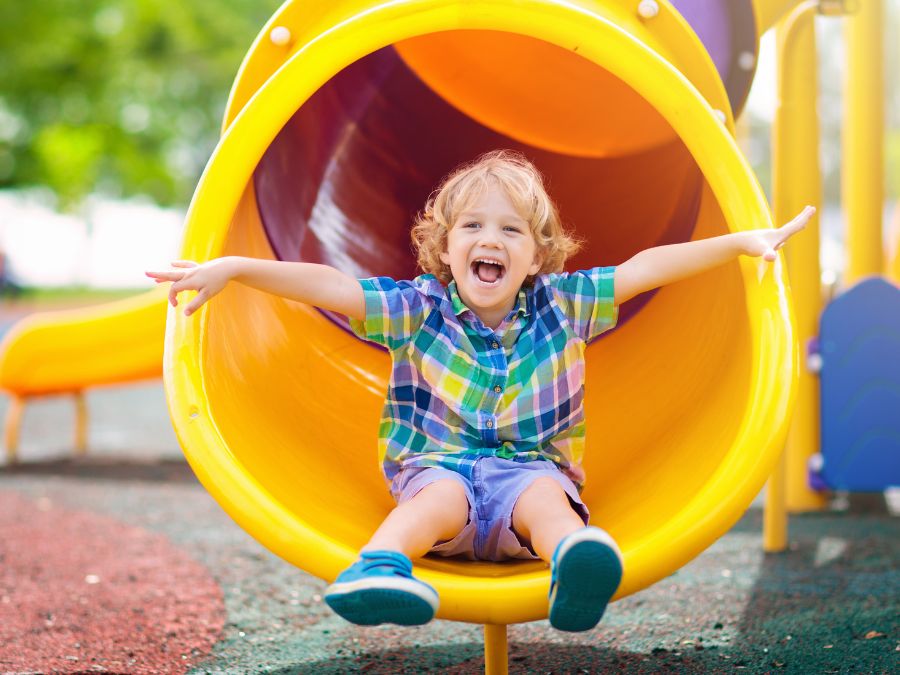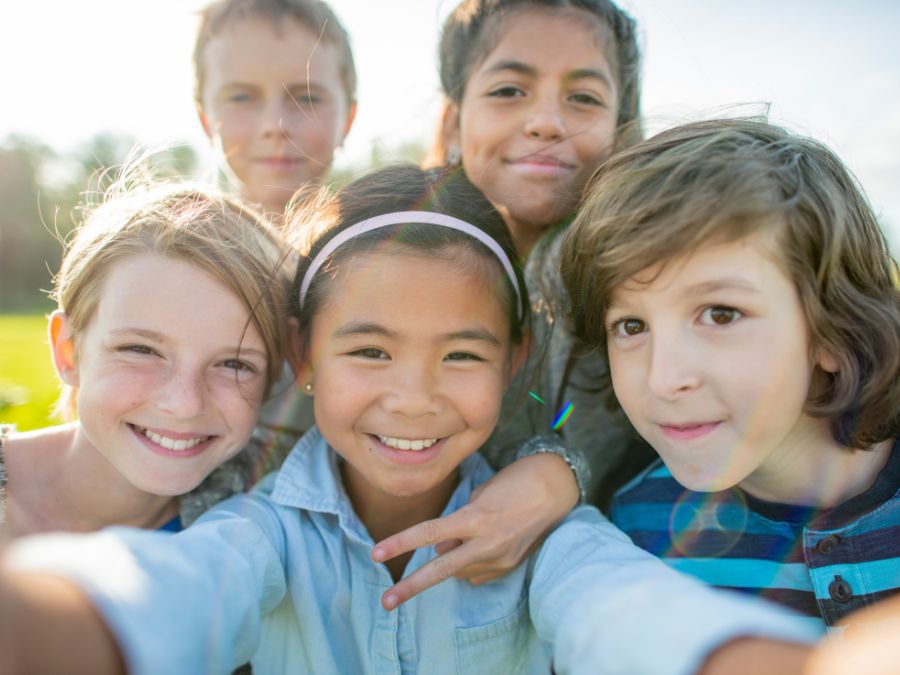
What are positive childhood experiences?
Positive childhood experiences, also known as PCEs, are protective experiences that help heal the brain from trauma and promote healthy mental health in adulthood. In 2019, HOPE Director Robert Sege, Christina Bethell, PhD, MBA, MPH, and others published a study in JAMA Pediatrics where they found that PCEs can promote well-being even when exposed to Adverse Childhood Experiences (ACEs).
When children are exposed to ACEs, they are at risk for developing depression and poor mental health effects as adults. The outcomes from the 2019 study show that we will not automatically develop poor mental health due to ACEs exposure. PCEs give us hope that we can heal from trauma and protect ourselves against future effects of trauma.
How to practice PCEs
Positive childhood experiences can look different for each child and family. PCEs allow children to form strong relationships and meaningful connections, cultivate positive self-image and self-worth, experience a sense of belonging, a sense that they matter, and build skills to cope with stress in healthy ways.
At the HOPE National Resource Center, we train all on the Healthy Outcomes from Positive Experiences (HOPE) framework, an approachable strength-based model where PCEs are organized into four broad categories we call the Four Building Blocks of HOPE. These categories – relationships, environments, engagement, and emotional growth – originated from a 2017 paper by Drs. Sege and Charlyn Harper Brown published in Academic Pediatrics where the HOPE framework was first introduced as a response to ACEs.
Four Building Blocks of HOPE
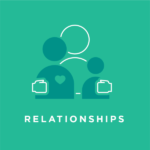
Relationships
Safe and supportive relationships can be peer-to-peer, child-to-parent, or non-parent-adult-to-child. It is shown that children who are also supported by adults who are not their parents are positively impacted.
We can promote relationships by:
- Being a supportive relationship! Take the time to connect with the children around you.
- Sharing information about after-school activities where children can connect with coaches, mentors, or peers.
- Playing and connecting with children regularly! Be silly, move your bodies together, read a book, watch a movie.
- Asking about other positive adults in the child’s life. They can be coaches, teachers, pastors, and mentors.
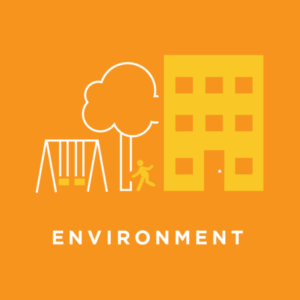 Environment
Environment
Environments are safe places where children can live, learn and play. This Building Block extends to all areas of a child’s life, home, school, playgrounds, and neighborhoods. By being in spaces that make them feel physically and emotionally safe, children are free to be who they are and grow into healthy adults.
We can promote environments by:
- Supporting a community environment where children can play and interact safely and equitably.
- Listening to children when they talk about school. Do they feel safe there? Are they treated well by their peers or school staff? If not, children, families, and schools can work together on solutions.
- Starting a program providing food on the weekends and over breaks, if your school does not provide one.
- Helping children find safe places to play outside. Is there a backyard, local park, and recess time where they can play with siblings and friends?
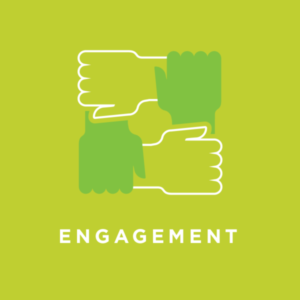 Engagement
Engagement
Engagement creates or finds spaces where children and youth can be a part of something that is bigger than themselves. This can happen in the classroom, in the community, at home. Leadership positions are important opportunities for youth: responsibility teaches them that they are important and can make a positive impact on those around them.
We can promote engagement by:
- Working on creative projects with children and sharing their favorite activities with their friends.
- Providing fliers about Community Centers, after-school activities, and mentoring programs in your community.
- Volunteering in the community together as a family or group.
- Creating new after-school activities.
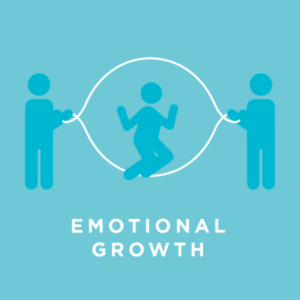 Emotional growth
Emotional growth
Emotional growth is opportunities where children and youth experience difficult events and emotions and feel supported through the experience. Children can build resilience by learning that they are not defined solely by their successes or failures. This Building Block can be practiced by being with children and youth as they experience strong emotions and supporting them through it with empathy and patience.
We can promote emotional growth by:
- Helping children to name their feelings as they talk about them and what they feel like.
- Remembering that disagreements in peer groups are normal and showing children how to disagree respectively and productively.
- Supporting school-led social and emotional learning curriculum.
- Making time for open play with friends and siblings where the children lead on their own.
Creating a difference with PCEs
Positive childhood experiences are the other half of the story when we screen for Adverse Childhood Experiences. Children, youth, and families are not only exposed to ACEs. As professionals working in child- and family-serving fields, we ask them what is going well and allow them to find space for all parts of their lives. For example, we can ask more questions centered around the Four Building Blocks of HOPE during a screening. These PCEs-focused questions can start conversations that help us celebrate the strengths of children and families and, on both sides of the screening, recognize and create access to the Building Blocks missing in their lives.
We can also practice positive childhood experiences in policy settings. Existing policies can create barriers to PCEs that block families’ access to the Four Building Blocks of HOPE. This can happen on both the organizational and governmental level. When we update and introduce new policies that prioritizes people’s access to PCEs, we can create widespread support systems and strength-based environments for professionals and the children, families, and communities they serve. Promoting PCEs at the organizational and governmental level provides even more opportunities for children and families to heal and build resilience, helping children growing into healthy adults.
Start practicing PCEs
At the HOPE National Resource Center, we see a world that honors and fosters positive experiences as being fundamental to everyone’s health and well-being. To help spread the practice of positive childhood experiences, we offer resources, trainings and technical assistance, and research centered around the HOPE framework.
Resources
Introduction to HOPE
- HOPE Two Pager
- Four Building Blocks of HOPE fact sheet
- Four Building Blocks of HOPE interactive worksheet (English and Spanish)
Practicing the HOPE framework
Training and Technical Assistance
- Presentation and workshop request form
- Online HOPE courses
- HOPE Certification programs (individual and organizational levels)
- Local HOPE trainers (U.S. and international)
Research
- Positive childhood experiences protect adult mental health (JAMA Pediatrics)
- Responding to ACEs with HOPE: Healthy Outcomes from Positive Experiences (Academic Pediatrics)
- Transforming Practice with HOPE (Maternal and Child Health Journal)
Contact us
Not sure how to start practicing positive childhood experiences in your work or community? Reach out to us with any questions.

